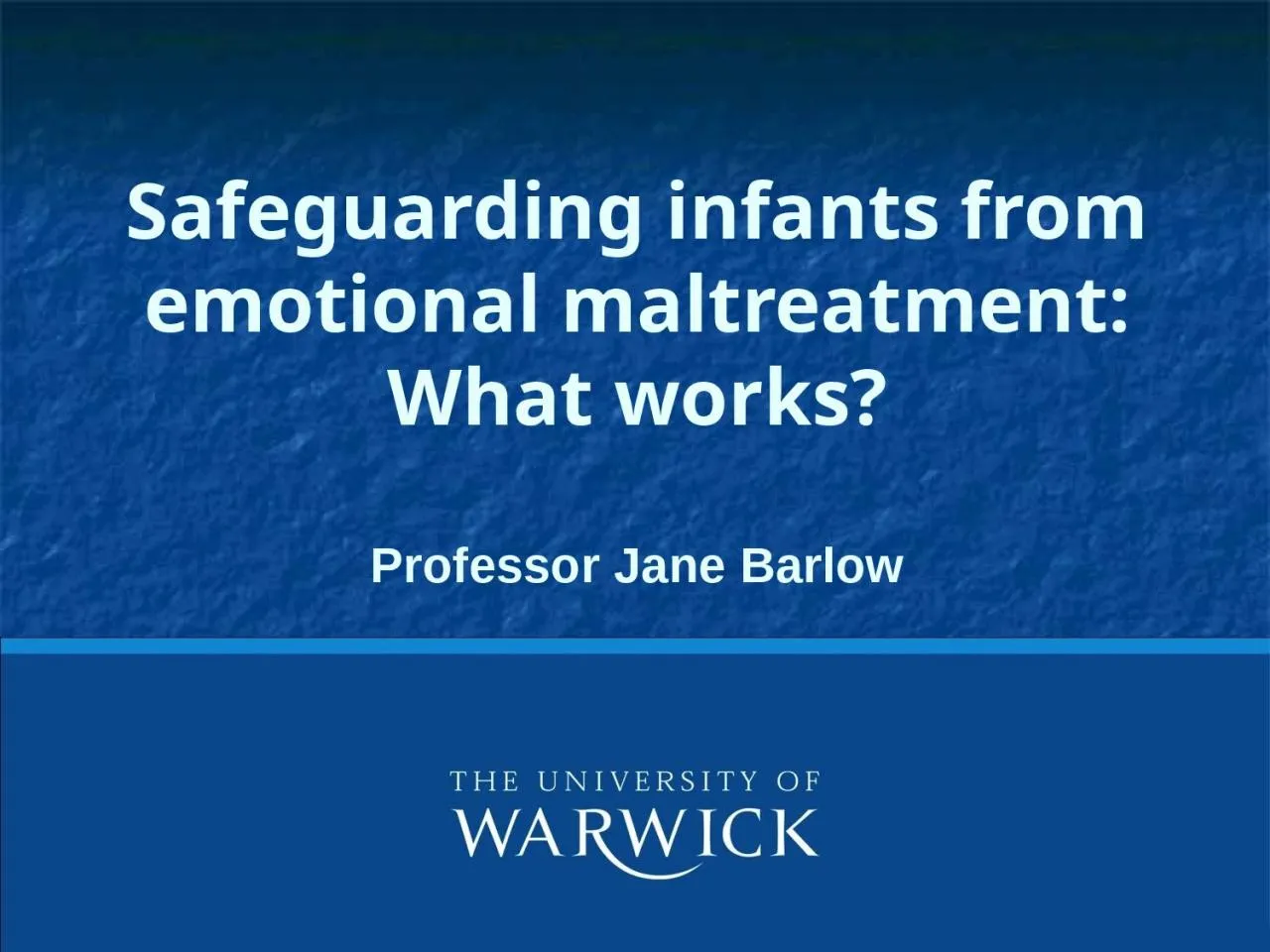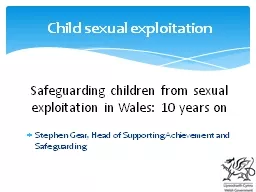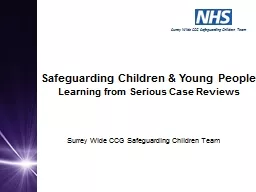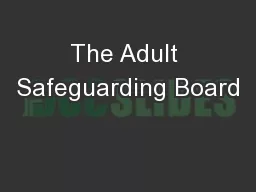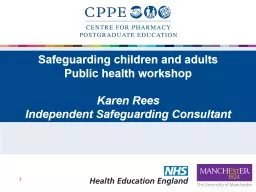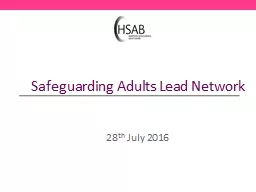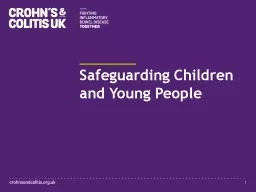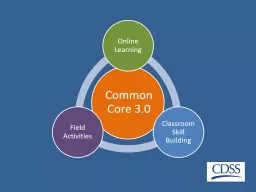PPT-Safeguarding infants from emotional maltreatment: What works?
Author : alyssa | Published Date : 2022-06-07
Professor Jane Barlow Structure of paper What is emotional abuse during the first two years of life Why the first two years matter What the evidence tells us about
Presentation Embed Code
Download Presentation
Download Presentation The PPT/PDF document "Safeguarding infants from emotional malt..." is the property of its rightful owner. Permission is granted to download and print the materials on this website for personal, non-commercial use only, and to display it on your personal computer provided you do not modify the materials and that you retain all copyright notices contained in the materials. By downloading content from our website, you accept the terms of this agreement.
Safeguarding infants from emotional maltreatment: What works?: Transcript
Download Rules Of Document
"Safeguarding infants from emotional maltreatment: What works?"The content belongs to its owner. You may download and print it for personal use, without modification, and keep all copyright notices. By downloading, you agree to these terms.
Related Documents

